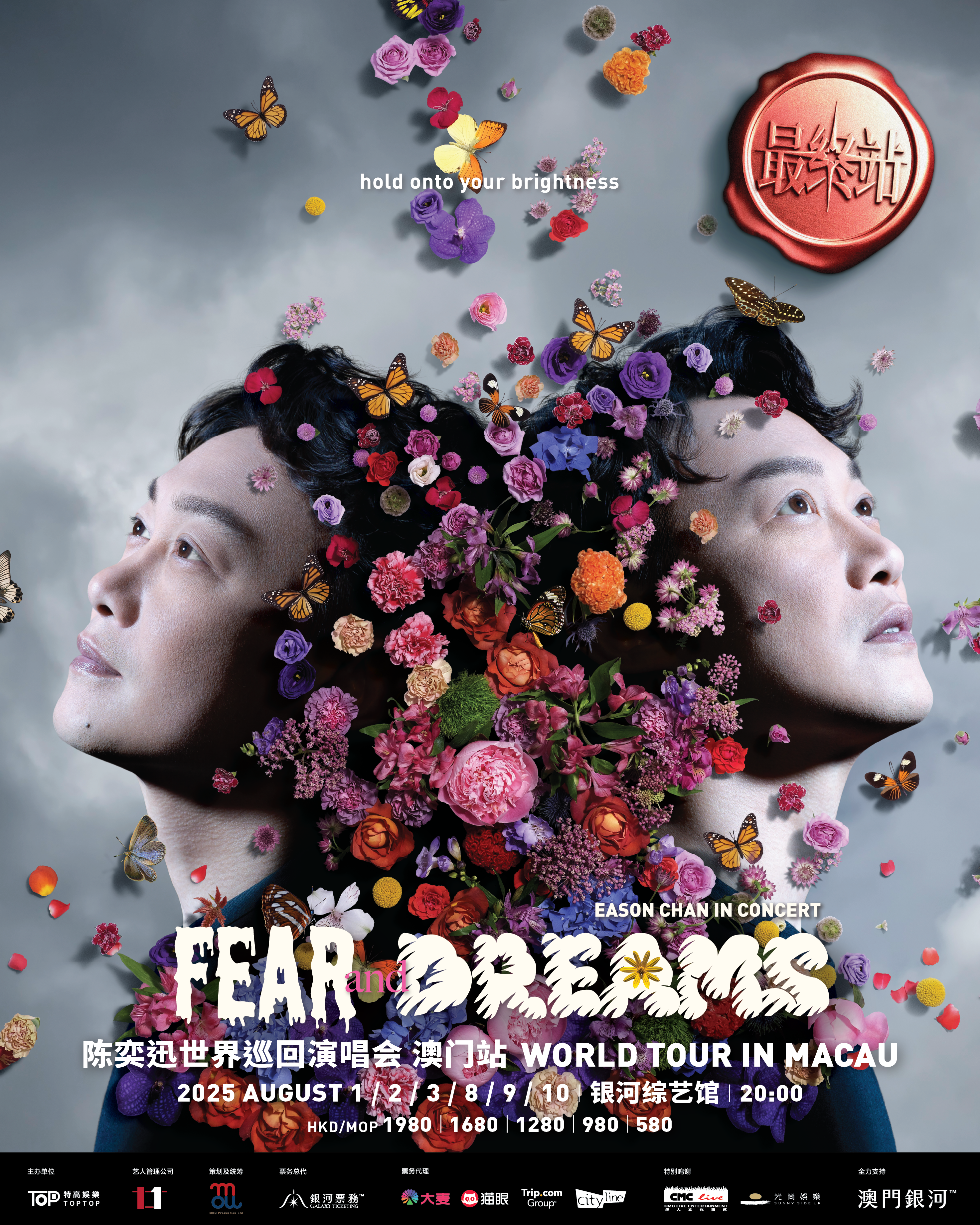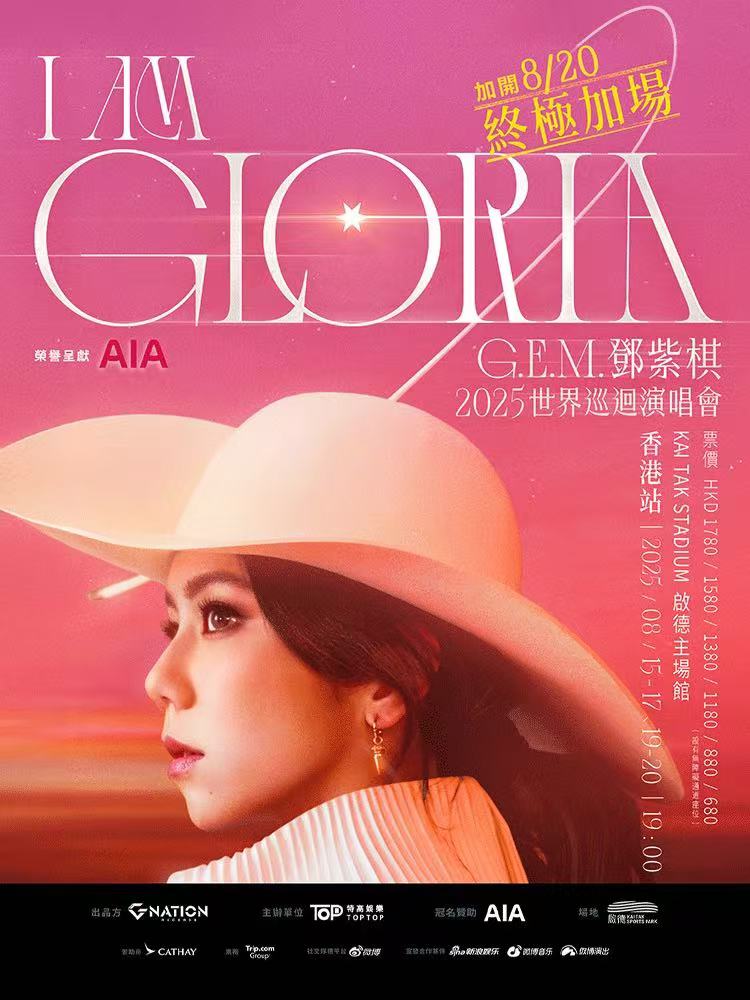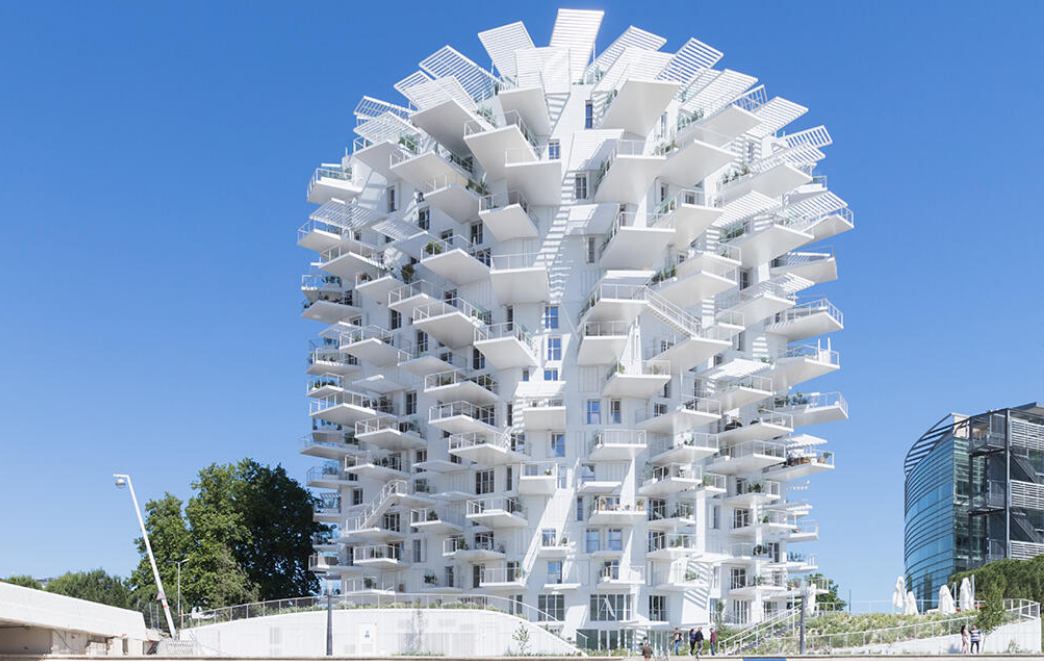Recent Searches
Popular Attractions
London
Edinburgh
Windermere
York
Manchester
Latest Events in Sao Paulo(August Updated)
Are you interested in Tropical Palm Tree Paint Night?
245 people have participated in this
poll
Yes
No




50%



50%
Type
Location
Event Status
Popularity
Start Time
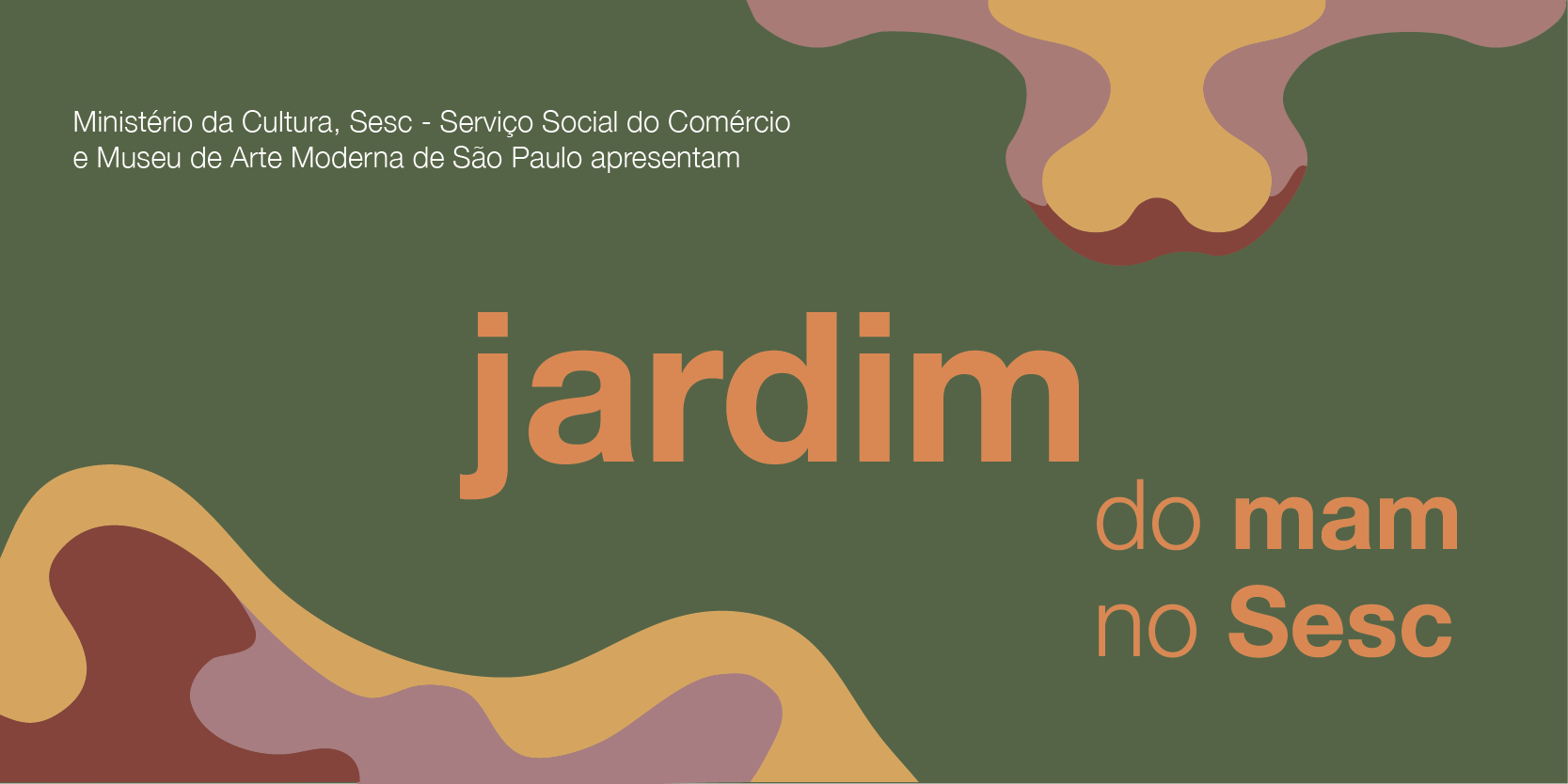
Garden of MAM at Sesc | São Paulo Museum of Modern Art
The MAM Sculpture Garden is a landmark in Ibirapuera Park, an iconic place for leisure and socializing in the city of São Paulo. As a transition zone between the MAM and its urban habitat, the garden transcends the boundaries of conventional museum space and, without obstructing the passage of those who walk there, provides the public with a shared space to enjoy through art. Officially inaugurated in 1993, the history of the MAM Garden follows the development of the museum itself and its presence in Ibirapuera Park. Documents indicate that, shortly after the inauguration of the MAM headquarters in the park in 1969, the museum soon became concerned with the care of the works sparsely present there and committed to creating a “Sculpture Garden” with works from its own collection. With the renovation in the 1980s, which established the museum’s characteristic glass façade and transformed its relationship with the park and the city, the use of the Garden was intensified. The curatorial organization was consolidated in 1993, when the works were repositioned, and the space between the Oca, the Bienal pavilion and the MAM received landscaping designed by the office of Roberto Burle Marx, in partnership with Haruyoshi Ono.
Roberto Burle Marx (1909-1994) was one of the great names of Brazilian modernism, with a body of work that, through various media, contributed to the fields of landscaping, urbanism and ecology. His contributions were essential to consolidating gardens as forms of artistic expression capable of redefining spaces of circulation and, especially, of public importance. Between 1992 and 1993, Burle Marx carried out a landscaping project for Ibirapuera Park that included, in particular, the external area of the MAM and the works from his collection exhibited there. The Sculpture Garden had already been part of two previous versions of Burle Marx's project for the Park, in 1953 and 1974, but it was only completed in the 1990s. Conceived by the author as “a space to encourage the practice of artistic coexistence in the community”, the landscaping in the MAM Garden introduced new plant species – grouped in such a way as to highlight their common features and, at the same time, explore their different textures and colors – and established paths made of gravel, pebbles and grass, which lead visitors to the works.
At this time when MAM is out of its headquarters due to the renovation of the Ibirapuera Park marquee, we propose a kind of reenactment of the MAM Garden at Sesc Vila Mariana, but without any intention of literally reconstituting its plant elements or presenting the same works that make up the original space. Influenced by Burle Marx's extensive output, especially the drawings and paintings produced during the design process of many of his landscape projects, we created an exhibition design whose architecture is based on the spatiality, colors, shapes and lines of two important projects: the MAM Sculpture Garden in Ibirapuera Park and the garden of the Gustavo Capanema Palace, the former headquarters of the Ministry of Education and Health, in Rio de Janeiro. The former was the source of the “islands” that group the works in the exhibition and the topographical variations of the MAM Garden's terrain, reflected in the different heights that make up these “islands”. The colors and designs of the bases were inspired by a painting by Burle Marx, produced as a study for the Gustavo Capanema Palace garden in 1938, which projects an area delimited by sinuous contours and represents different plant species with a variety of colorful, equally sinuous patches.
The exhibition at Sesc Vila Mariana includes works that are part of, or have been part of, the set on display at the Ibirapuera Park Sculpture Garden and works from the MAM collection that relate, in different ways, to nature, the body, the city, materiality, and to languages that express some of the inescapable tensions in society. Similar to the activations routinely carried out by MAM Educativo in the Sculpture Garden, the museum's educators will carry out actions during the exhibition period that will highlight various ways of relating to Burle Marx's landscaping that we reinterpret here.
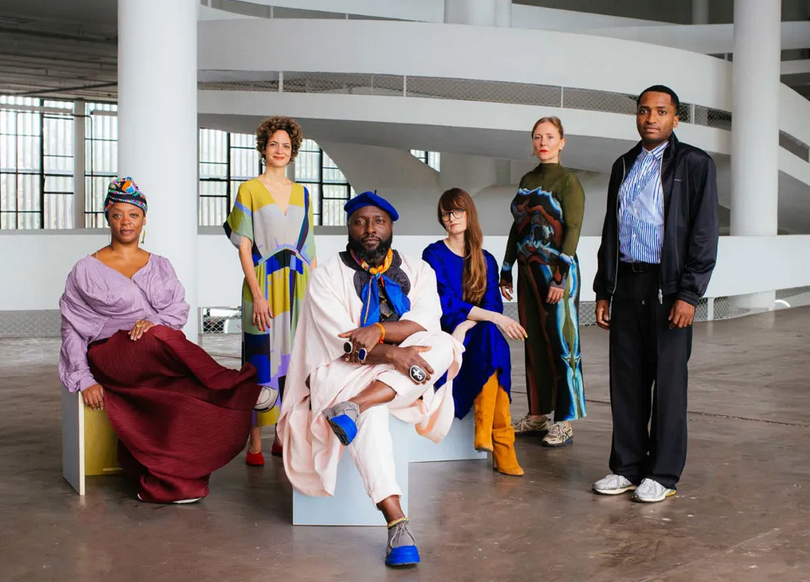
2025 Bienal de São Paulo: Not All Travellers Walk Roads – Of Humanity as Practice | Ciccillo Matarazzo Pavilion

Katy Perry, Camila Cabello, Jacob Collier Sao Paulo Concert Tour 2025|September 14 | AutodromoJoseCarlosPace(Interlagos)
In the vibrant city of Sao Paulo, the stage is set for an unforgettable musical extravaganza featuring the illustrious talents of Katy Perry, Camila Cabello, and Jacob Collier. Scheduled for September 14, 2025, at the renowned Autodromo Jose Carlos Pace (Interlagos), this event promises to be a feast for the senses. With ticket prices set at an accessible 119 USD, music enthusiasts will have the opportunity to experience the electrifying performances of these global icons. Katy Perry, known for her chart-topping hits and captivating stage presence, will undoubtedly dazzle the audience with her dynamic energy. Camila Cabello, with her soulful voice and magnetic charisma, is sure to enchant fans with her heartfelt melodies. Meanwhile, Jacob Collier, celebrated for his innovative musical genius, will bring his unique blend of genres to the stage, creating a mesmerizing auditory experience. This convergence of musical prowess in Sao Paulo is not to be missed, as it promises to deliver an unforgettable experience that will resonate with attendees long after the final note is played.

Abrafati 2025 | Sao Paulo Expo
ABRAFATI is the leading event for the coatings supply chain in Latin America, as well as one of the top-three most important in the global arena ABRAFATI is the leading event for the coatings supply chain in Latin America, as well as one of the top-three most important in the global arena which will provide an ideal opportunity for people to gain a panoramic view of the megatrends dictating the pathways for the coatings industry and the broad range of innovations developed with a view to keeping up to speed.
Information Source: ABRAFATI | expotobi

Avenged Sevenfold Sao Paulo Concert Tour 2025|October 04 | AllianzParque
Avenged Sevenfold Sao Paulo is set to be an unforgettable event for rock enthusiasts in the vibrant city of Sao Paulo. Taking place at the renowned AllianzParque on October 4, 2025, at 19:00, this concert promises to deliver an electrifying performance by the iconic band Avenged Sevenfold. Known for their dynamic stage presence and powerful musical repertoire, Avenged Sevenfold will captivate the audience with a mix of their greatest hits and new tracks. With tickets priced at 69 USD, fans will experience a night of high-energy rock music in one of Brazil's premier venues. AllianzParque, located in the heart of Sao Paulo, offers state-of-the-art facilities and an atmosphere that enhances the concert experience. This event is a must-attend for anyone looking to witness the raw talent and passion of Avenged Sevenfold in Sao Paulo.

Tomorrowland Brasil 2025 | Itu
The People of Tomorrow can look forward to an exciting new chapter in the history of Tomorrowland, as Tomorrowland Brasil 2025 will embrace the enchanting 'LlFE' theme. Last October, People of Tomorrow came together in Brazil to celebrate the rise of 'Adscendo. This year, the Brazilian edition embraces 'LlFE, a prequel to the 2016 'Elixir of Life' theme, uncoveringthe origins of the legendary healing potion. Set in the mythical realm of Silvyra, where nature,creatures, and people coexist in harmony, this beautiful tale will unfold on a the breathtaking 'LlFE'Mainstage, bringing another unforgettable chapter to Tomorrowland's story. First revealed at[omorrowland's special 20-year anniversary edition in Belgium in 2024, the spectacular stage will now make its home at the festival grounds of Parque Maeda in Brazil. DreamVille, Tomorrowland Brasil's offcial camping site, offers a unique camping experience and a vibrant 5-day escape right next to the festival area of Parque Maeda, including a wide range of accommodations. More than just a place to stay, it's a lively city where festivalgoers eat, sleep and celebrate together from Thursday to Monday. Guests can explore the Marketplace with shops food stands, a bakery, a beauty salon, and more, or unwind with yoga sessions and sports activities. From Friday to Sunday, exclusive Daybreak Sessions add to the magic. The adventure begins on Thursday with The Gathering, Tomorrowland Brasil's one and only open-air opening party, setting the stage for an unforgettable weekend.

F1 Sao Paulo Grand Prix 2025 | Autódromo José Carlos Pace
F1 Sao Paulo Grand Prix 2025 is set to take place from November 7 to November 9, 2025 on the iconic Jose Carlos Pace in Sao Paulo. Known as the crown jewel of the F1 calendar, this legendary street circuit offers a thrilling mix of tight corners, glitz, and breathtaking views — a must-watch for both F1 veterans and new motorsport fans.
Looking to catch the race live? Don’t miss out on updates about the 2025 F1 race schedule, F1 Sao Paulo GP 2025 ticket prices, grandstand seating options, and driver standings. Whether you’re planning your Brazil F1 travel package, or just want to stay up to date with the latest Formula 1 highlights, we’ve got you covered. Stay tuned on Trip.com and start planning — the adrenaline of Formula One racing awaits in Brazil!
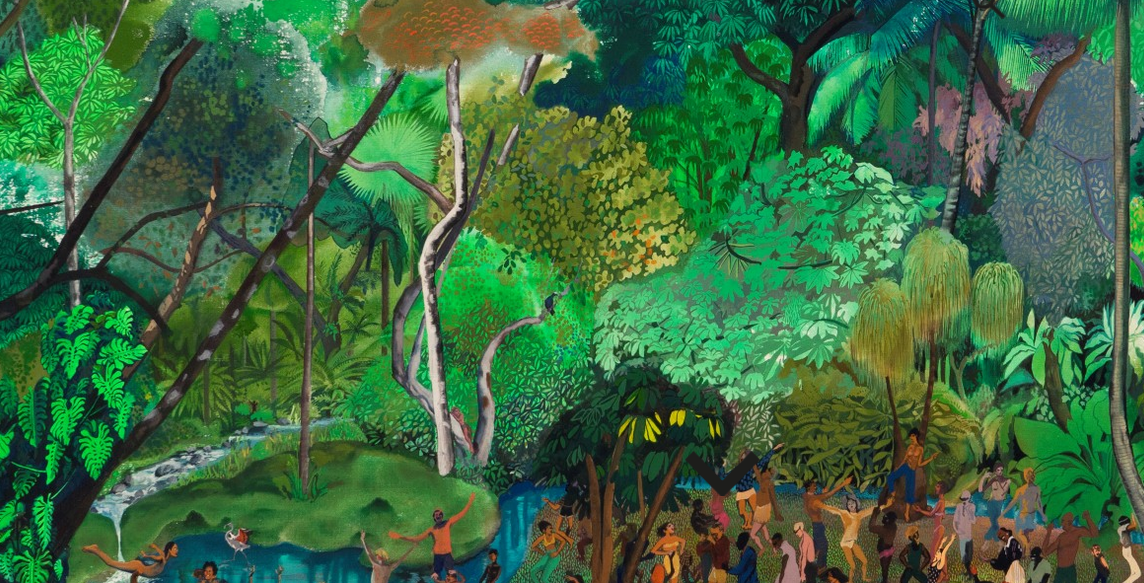
Hulda Guzmán: Miraculous Fruits | Museum of Art of São Paulo Assis Chateaubriand
MASP – Museu de Arte de São Paulo Assis Chateaubriand presents, starting on April 11, the exhibition Hulda Guzmán: Frutas Milagrosas, the first solo exhibition by Dominican artist Hulda Guzmán (Santo Domingo, Dominican Republic, 1984) in a museum. In her paintings, the artist subverts the tradition of landscape painting by denying its exotic and idyllic representation, choosing instead to treat nature as a protagonist territory in which all elements are interdependent. Relationships of affection and the surroundings of the place where she lives are recurring themes in her paintings, in which tropical and fantastical settings are inhabited by a diverse cast of characters — real or imaginary. Her works maintain a biographical character, imbued with humor and a dreamlike or theatrical appeal.
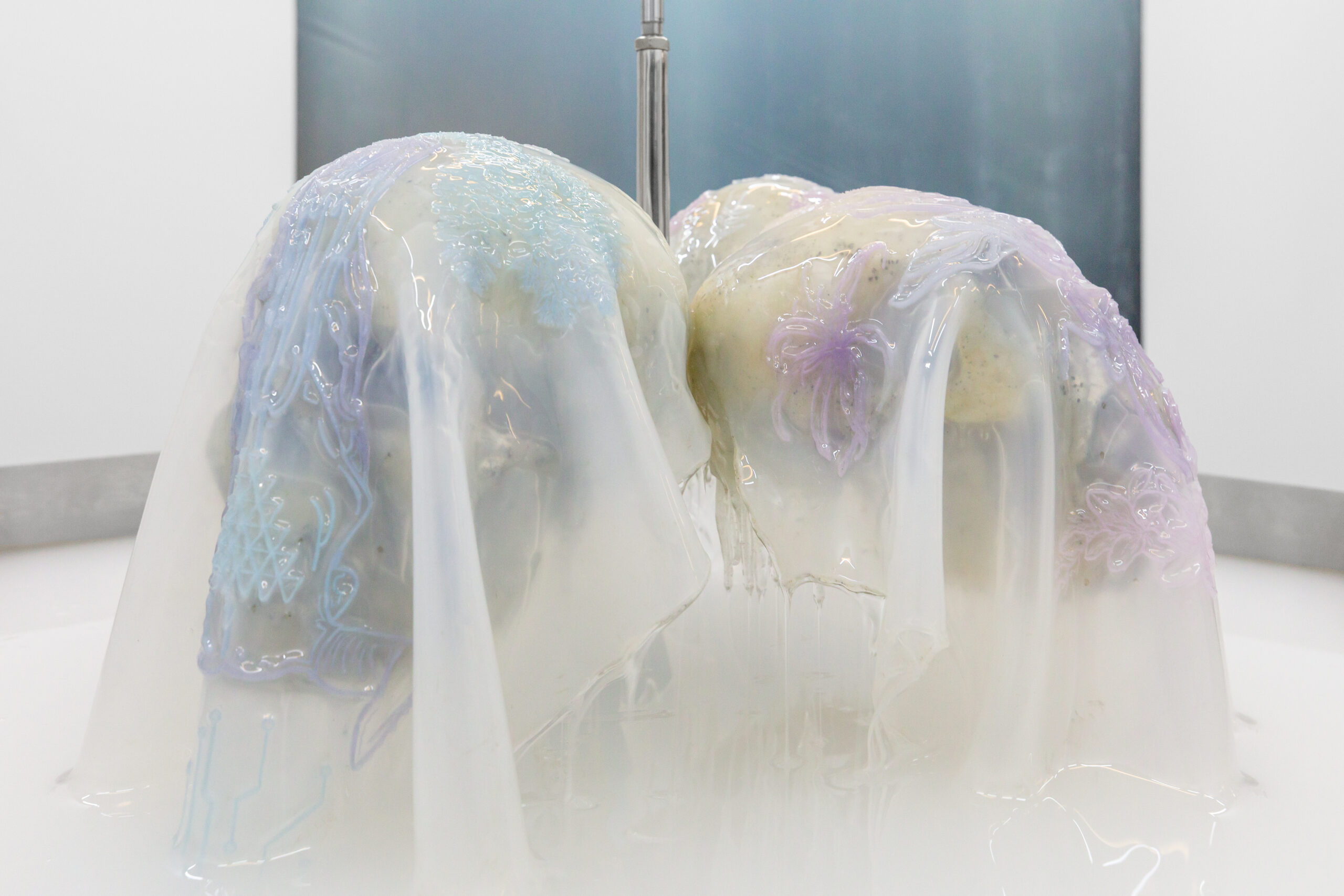
38th Panorama of Brazilian Art: One Thousand Degrees | São Paulo Museum of Modern Art
The 38th edition of Panorama da Arte Brasileira: Mil Graus arrives at Sesc Campinas as a live ember, bringing together works that illuminate and elaborate sensibilities, identities and experiences from different contexts in the country. Constituted as a critical reflection on the national reality, the exhibition brings together artists whose practices traverse urgent issues: from the ecological to the technological, from the political to the spiritual.
As matter in transmutation, these works soften the limits of language and activate collective memories against hegemonic ones, proposing not only reflection, but action. Based on an understanding of the exhibition space as an environment where contrasts and connections merge, the selected works operate as fissure devices — they expose cracks in crystallized logics and suggest new ways of inhabiting the world.
With this itinerant exhibition, inaugurated in 2024 at MAC USP and held by the Museum of Modern Art of São Paulo, Sesc seeks to expand access to the symbolic layers that make up the exhibition. In addition to the visit, the program includes educational mediations that deepen the instances of sharing between artists and audiences. Like the transitory states of matter that heat brings about, the institution is interested in establishing itself as an educational space in which subjective processes between what has been and what is to come take place, revealing themselves in the creative experiences specific to the artistic field.
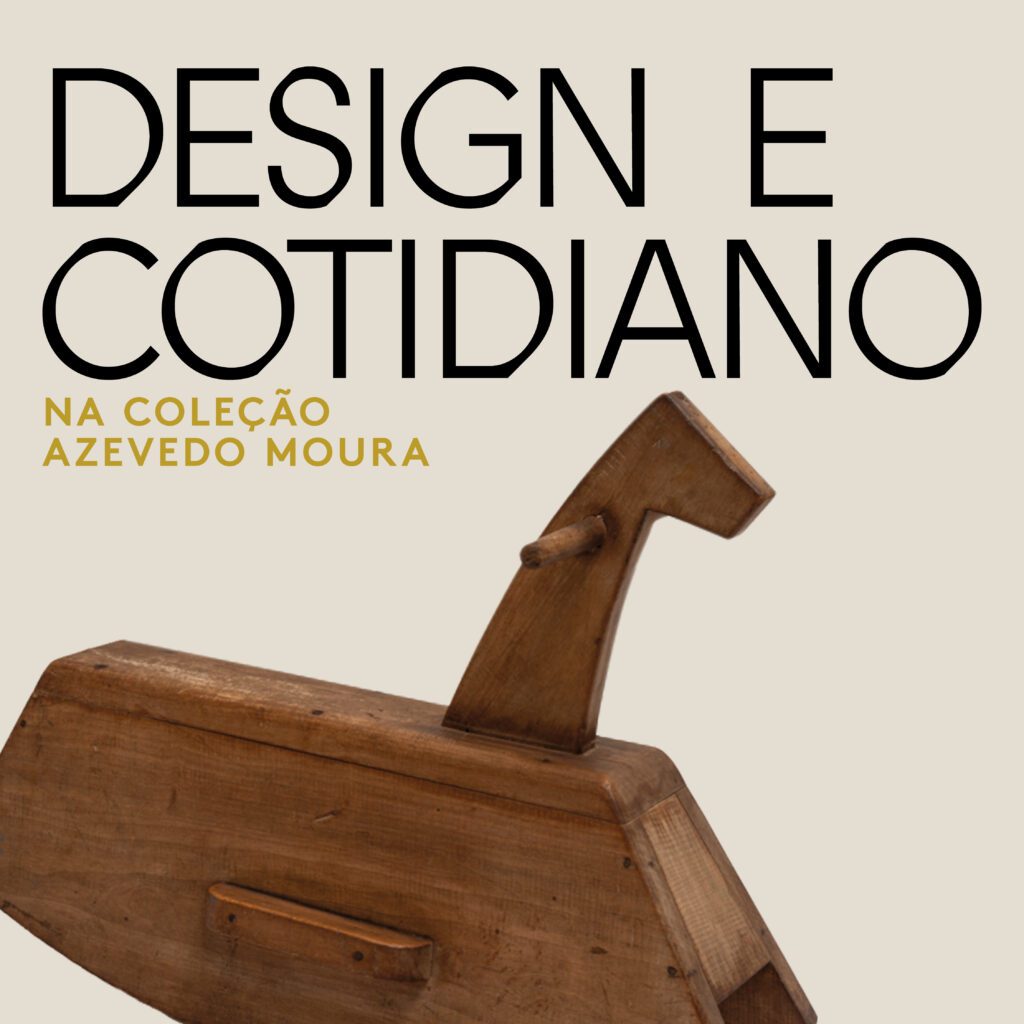
DESIGN AND EVERYDAY LIFE IN THE AZEVEDO MOURA COLLECTION | Museu Paulista
The exhibition Design and Everyday Life in the Azevedo Moura Collection, curated by Adélia Borges, presents an extensive set of objects collected especially in Rio Grande do Sul, which allow us to reflect on the traditionally exclusionary ways of thinking about Brazil's past. Brought together by the sensitive gaze of the couple Maria Cristina and Carlos Azevedo Moura, these objects form one of the largest Brazilian collections relating to the immigration of Italians and Germans who arrived in the South of the country from the 19th century onwards.
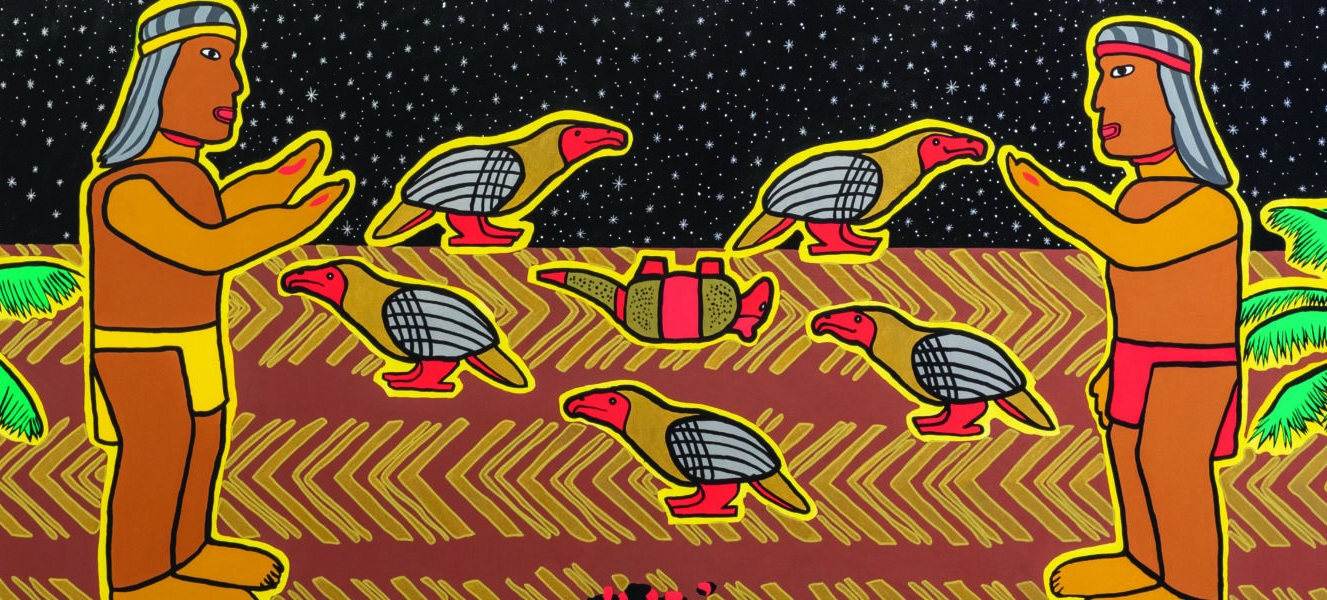
MAM São Paulo at the Pinacoteca do Ceará: figure and landscape, word and image | São Paulo Museum of Modern Art
The São Paulo Museum of Modern Art was founded in 1948, and its collection, with an emphasis on Brazilian art, boasts over 5,000 works produced by the most representative modern and contemporary artists. Like its collection, MAM's programming prioritizes experimentalism, embracing the plurality of current artistic production and the diverse interests of contemporary societies. Traditionally, the museum maintains a broad range of activities that include courses, debates, a research laboratory, video screenings, and artistic and educational practices.
In 1986, MAM created the Collectors' Club, whose goals include enriching its collection and developing private collecting. Through the Club, artists at different stages of their careers are invited to propose works in multiple formats for a limited edition, at least one of which is incorporated into the MAM collection. In 2024, the museum began a review of its collection and donated to the Pinacoteca do Ceará a set of 87 works that had participated in different editions of the MAM Collectors' Club and were previously duplicated in the collection.
MAM at the Pinacoteca do Ceará: Figure and Landscape, Word and Image is an exhibition that builds on this donation and features 47 works from the MAM collection and are linked to modern and contemporary art. By bringing the MAM collection closer to the works recently acquired by the Pinacoteca, the exhibition brings together 94 works from different languages and technical procedures, such as photography, woodcuts, silkscreen printing, painting, drawing, sculpture, embroidery, video, among the most varied combinations and derivations. This contingent of diverse materials and artistic practices reflects the multidisciplinarity that characterizes Brazilian art and, thus, seeks to offer visitors plurality as a way to reflect on and engage with art and its inherent issues.
The relationship between figure and landscape is addressed in the first section of the exhibition, which brings together works that develop different perspectives on an issue dear to the history of art and the transformations promoted since the modernist avant-garde. In some works, the presence of figures in front of or amid landscapes, or before empty spaces, challenges us to reflect on how bodies and portraits connect with the space and world around them, and how the boundaries between subjects and the natural and artificial landscape can be blurred. In other works, the appearance of landscapes devoid of figures, as well as ambiguous representations of the body and the spaces it occupies, or can occupy, destabilize crystallized meanings by introducing abstraction into the process of perceiving and signifying the world and the ways in which we relate to it.
The links between word and image are analogous to the relationships between figure and landscape and come into focus in the final section of the exhibition, where works containing letters, words, and texts put into perspective the apprehension of written language in the context of an image-based construction. Every word produces meaning through a mental image, just as some images can be understood through their connection to writing and as visual language. In the works featured in the exhibition, these relationships are reconfigured as words and letters, alongside other compositional elements, contaminate one another, highlighting the impossibility of completely separating the reading of the image from the reading of the word.
This exhibition is the result of a partnership between MAM São Paulo and the Pinacoteca do Ceará. It aims to increase the visibility of both museums' collections and contribute to the Pinacoteca do Ceará's programming, as well as foster reflection on modern and contemporary art.

The Reverend Peyton's Big Damn Band St Paul Concert Tour 2025|August 06 | Turf Club
The Reverend Peyton's Big Damn Band St Paul is set to electrify the Turf Club on August 6, 2025, at 8:00 PM. Nestled in the heart of St Paul, this iconic venue at 1601 University Ave W will host an evening of foot-stomping blues and roots music that promises to be unforgettable. Known for their raw energy and authentic sound, The Reverend Peyton's Big Damn Band brings a unique blend of country blues and rock 'n' roll, captivating audiences with their dynamic performances. With a reputation for storytelling through music, the band delivers a powerful experience that resonates deeply with fans and newcomers alike. As the clock ticks closer to showtime, anticipation builds for an event that promises not just music, but a journey through the rich tapestry of American roots. The Reverend Peyton's Big Damn Band St Paul is more than a concert; it's a celebration of sound and spirit that echoes long after the final chord is struck.

Clipping. St Paul Concert Tour 2025|August 07 | Turf Club
Clipping. St Paul is set to electrify the Turf Club on August 7, 2025, at 8:30 PM, promising an unforgettable evening in the heart of St Paul. Nestled at 1601 University Ave W, this iconic venue will host an event that blends the avant-garde with the auditory, offering a unique experience for attendees. With tickets priced at $65, this event is a must-see for those who appreciate innovative soundscapes and cutting-edge performances. Known for pushing the boundaries of music, Clipping. brings a distinctive blend of noise, hip-hop, and experimental sounds that captivate audiences worldwide. As the anticipation builds, the Turf Club stands ready to welcome enthusiasts to a night where artistry and atmosphere converge, making Clipping. St Paul an essential highlight on the cultural calendar.

Big Time Rush St Paul Concert Tour 2025|August 08 | Xcel Energy Center
Big Time Rush St Paul is set to electrify the Xcel Energy Center on August 8, 2025, at 7:00 PM. Nestled in the heart of St Paul, this event promises an unforgettable evening filled with dynamic performances and captivating music. The Xcel Energy Center, located at 199 W Kellogg Blvd, provides the perfect backdrop for this highly anticipated concert. With ticket prices ranging from $40 to $41, fans can expect an accessible and thrilling experience. Known for their high-energy shows and chart-topping hits, Big Time Rush brings a unique blend of pop and charisma that appeals to audiences of all ages. As the band takes the stage, attendees will be swept away by their infectious energy and engaging stage presence. This event is more than just a concert; it's a celebration of music and community in the vibrant city of St Paul.

Pine Ranch Pasture Tour | Morse
Welcome to the Pine Ranch Pasture Tour!
Come join us for an exciting day at Morse where you'll get to explore the beautiful Pine Ranch Pasture. This in-person event is perfect for nature lovers and outdoor enthusiasts. Get ready to immerse yourself in the stunning landscapes, breathe in the fresh air, and learn all about the local flora and fauna.
What to Expect:
Guided tour of Pine Ranch Pasture
Opportunity to see native wildlife
Learn about the history of the area
Enjoy a picnic lunch in the great outdoors
Don't miss out on this unique opportunity to connect with nature and make unforgettable memories. Grab your friends and family, and join us for the Pine Ranch Pasture Tour at Morse!
Information Source: eventbrite

Def Leppard St Paul Concert Tour 2025|August 26 | MinnesotaStateFair
Def Leppard St Paul is set to electrify the Minnesota State Fair on August 26, 2025, at 7:00 PM. This highly anticipated event promises an unforgettable evening of rock and roll, featuring the iconic band Def Leppard. With a ticket price of 130 USD, attendees will experience a night filled with classic hits and high-energy performances. The Minnesota State Fair, located in St Paul, MN, offers a perfect backdrop for this legendary concert, ensuring an immersive and memorable experience for all rock enthusiasts. Fans can expect to hear timeless anthems such as "Pour Some Sugar on Me" and "Photograph," making Def Leppard St Paul a must-attend event for music lovers.

Forró on the Island Festival | Ilhabela
The 12th Forró na Ilha Festival will be held in a new location this year. The event brings together Forró na Ilha lovers with events themed around music, dance and culture, making it one of the main gatherings for this type of dance.

Kendrick Lamar Sao Paulo Concert Tour 2025|September 30 | AllianzParque
Kendrick Lamar Sao Paulo is set to electrify the vibrant city of Sao Paulo with an unforgettable performance at AllianzParque on September 30, 2025, at 8:30 PM. Known for his profound lyrics and dynamic stage presence, Kendrick Lamar promises an evening of unparalleled artistry and musical brilliance. With a ticket price of just 70 USD, this event offers an extraordinary opportunity to experience one of hip-hop's most influential voices live in concert. AllianzParque, nestled in the heart of Sao Paulo, provides the perfect backdrop for this monumental event, ensuring an immersive experience for all attendees. As anticipation builds, fans from across the globe eagerly await this night, where Kendrick Lamar's compelling storytelling and innovative sound will undoubtedly leave a lasting impression.

Mumford & Sons, Michael Kiwanuka St Paul Concert Tour 2025|October 09 | XcelEnergyCenter
Mumford & Sons, Michael Kiwanuka St Paul is set to be an unforgettable evening of music at the Xcel Energy Center in St. Paul, MN, on October 9, 2025, starting at 7:30 PM. This highly anticipated event brings together the Grammy Award-winning folk-rock band Mumford & Sons and the soulful sounds of Michael Kiwanuka, promising a night of stellar performances. The venue, known for its excellent acoustics and vibrant atmosphere, will provide the perfect backdrop for this musical extravaganza. With ticket prices ranging from $41 to $195, fans have the opportunity to experience the dynamic energy and heartfelt lyrics that both artists are renowned for. Mumford & Sons, with their powerful anthems and foot-stomping rhythms, combined with Michael Kiwanuka's rich, emotive voice, will create a captivating concert experience that is not to be missed. This event is poised to be a highlight of the year for music enthusiasts in St. Paul and beyond.
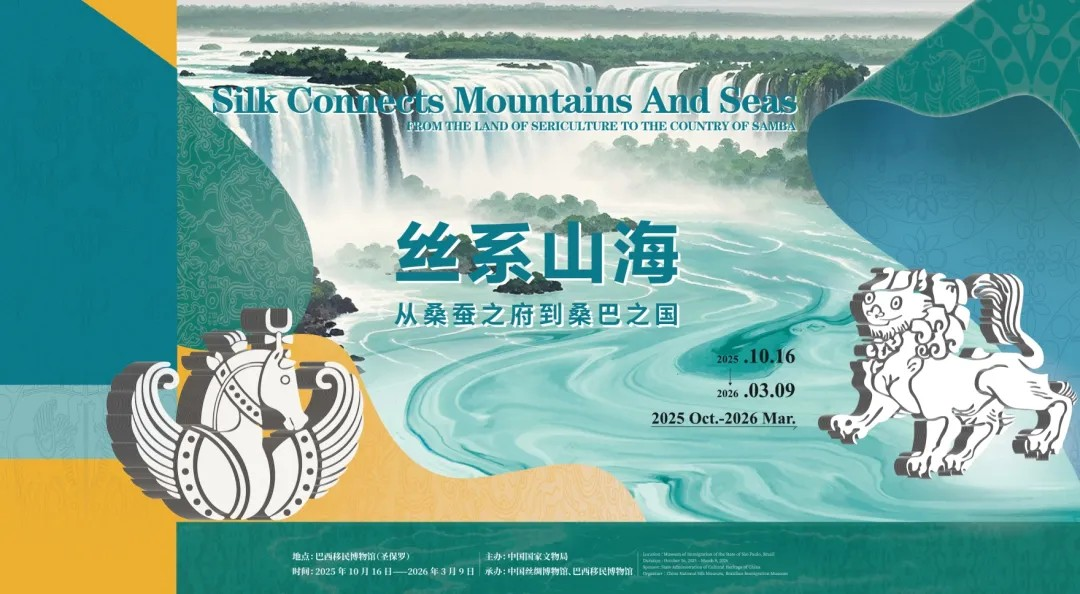
Silk Connects Mountains And Seas FROM THE LAND OF SERICULTURE TO THE COUNTRY OF SAMBA | São Paulo Museum of Immigration
Since the end of October, the China Silk Museum and the Brazilian Immigration Museum have jointly held the "Silk Mountains and Seas - From the Home of Silkworms to the Country of Samba" exhibition in Sao Paulo, Brazil, as part of the first batch of "Civilization Bridge Plan - Excellent Cultural Relics Overseas Exhibition" projects selected by the State Administration of Cultural Heritage this year, showcasing the charm of Chinese silk culture in all aspects.

Maroon 5, Claire Rosinkranz St Paul Concert Tour 2025|October 29 | XcelEnergyCenter
Maroon 5 and Claire Rosinkranz are set to light up St. Paul with an unforgettable performance at the Xcel Energy Center on October 29, 2025, at 8:00 PM. This highly anticipated event promises an evening of electrifying music and captivating performances, drawing fans from near and far. Maroon 5, known for their chart-topping hits and dynamic stage presence, will share the stage with the rising star Claire Rosinkranz, whose unique sound and fresh energy have been making waves in the music scene. With ticket prices set at $123, this event offers a rare opportunity to experience two incredible acts in one night, right in the heart of St. Paul. The Xcel Energy Center, renowned for its state-of-the-art facilities and vibrant atmosphere, provides the perfect backdrop for this musical extravaganza. Attendees can expect a seamless blend of pop, rock, and indie vibes, creating an experience that resonates long after the final note is played.

Tubotech 2025 | Sao Paulo Expo
Tubo Tech, over12,000 trade visitors, mainly from the oil and gas, automotive, construction, metal construction and mining industries Tubo Tech, over12,000 trade visitors, mainly from the oil and gas, automotive, construction, metal construction and mining industries, will gather information on the latest technologies and current pipe processing products over three days of the fair.
Information Source: Grupo Cipa Fiera Milano | expotobi

ForMobile 2024 | Anhembi Sambadrome
ForMobile 2024 is the leading Brazilian exhibition for suppliers in the furniture and wood industries. It serves as a platform for the world's top wood/panel manufacturing machinery, raw material, accessories, and hardware suppliers to connect with the most important buyers in the Latin American furniture industry. This international trade show covers the entire furniture industry chain, bringing together mass furniture factories, carpenters, woodworkers, resales, sawmills, designers, architects, and specifiers from all over Latin America.
Taking place in Sao Paulo, at the prestigious Anhembi Sambadrome, ForMobile 2024 offers a unique opportunity for industry professionals to showcase their products and connect with potential buyers. The event will run from July 2nd to July 5th, providing ample time for exhibitors and attendees to explore the latest trends, innovations, and business opportunities in the furniture and wood industries.
Located at Av. Olavo Fontoura, 1209 - Santana, São Paulo - SP, 02012-021, Brazil, the venue offers a spacious and well-equipped environment for exhibitors to display their products and for visitors to network and discover new business prospects.
Don't miss out on this important event for the furniture and wood industries. Join industry leaders, experts, and enthusiasts at ForMobile 2024 in Sao Paulo and be a part of the future of this thriving sector.
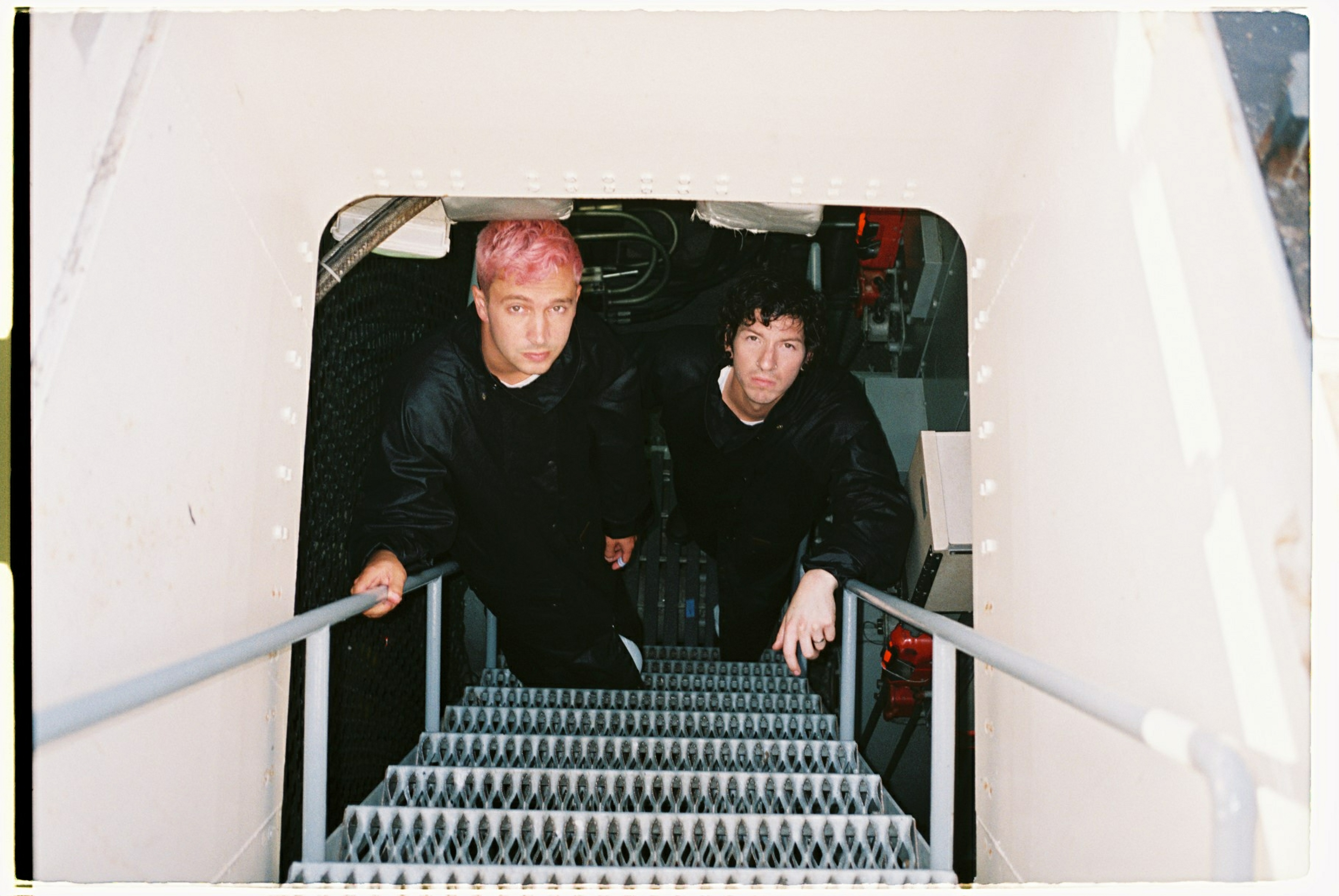
Twenty One Pilots - The Clancy World Tour | Sao Paulo

Design Weekend Sao Paulo 2025 | São Paulo
Design Weekend Sao Paulo aims to promote design culture and its connections with architecture, art, decoration, urbanism Design Weekend Sao Paulo aims to promote design culture and its connections with architecture, art, decoration, urbanism, social inclusion, business, and technological innovation.
Information Source: Summit Promo Media | expotobi
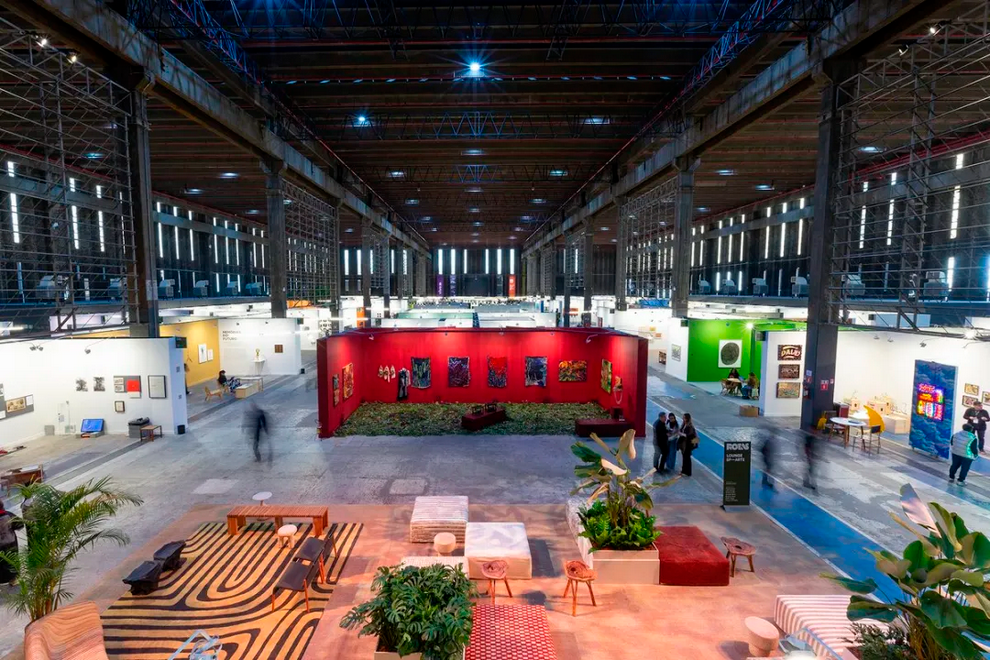
SP-Arte 2025 | Ibirapuera Park
The largest art fair in Brazil, bringing together important Latin American galleries and international exhibitors.SP–Arte was founded in 2005 and will celebrate its 20th anniversary in 2024. Over the past two decades, it has played a fundamental role in the professionalization, growth and promotion of the national art market. It also encourages the emergence of new interlocutors and drives the internationalization of Brazilian art.
The event is held annually for five days at the Bienal Pavilion in Ibirapuera Park. It brings together art galleries and design studios that work with contemporary and historical artists from the 20th and 21st centuries. In addition to galleries and studios, SP–Arte also features publishers, magazines, museums, institutions and independent spaces.
The fair is accompanied by an intense program of talks, launches and educational activities. In the period leading up to SP–Arte and during its realization, the SP–Arte Circuit also takes place, with exhibition openings and events throughout the city of São Paulo.

The Killers St Paul Concert Tour 2025|June 26 | PalaceTheatre
The Killers St Paul event promises an unforgettable evening of music and excitement at the renowned Palace Theatre in St Paul, MN. On June 26, 2025, at precisely 8:00 PM, the iconic band known for their electrifying performances and chart-topping hits will take the stage, captivating audiences with their unique blend of rock and indie sounds. Nestled in the heart of St Paul, the Palace Theatre offers an intimate setting that enhances the concert experience, ensuring every note resonates with the audience. With a reputation for delivering high-energy shows, The Killers are set to perform a mix of classic favorites and new releases, making this event a must-see for fans and music enthusiasts alike. Attendees can expect a night filled with powerful vocals, dynamic instrumentals, and an atmosphere that only The Killers can create. As anticipation builds, securing tickets early is advisable to witness this extraordinary musical event in one of Minnesota's most beloved venues.

Zac Brown Band - From The Fire Tour (Atlantic City) | Hard Rock Live at Etess Arena
The highly anticipated Zac Brown Band - From The Fire Tour is set to take place at the renowned Hard Rock Live at Etess Arena on September 15, 2023. This electrifying concert will showcase the band's signature blend of country, rock, and Americana music, leaving the audience craving for more. The venue's address, conveniently located at 1000 Boardwalk, Atlantic City, NJ, 08401, will serve as the perfect starting point for an unforgettable night of music. Prepare to be captivated by a carefully curated selection of Zac Brown Band's greatest hits, including the infectious melodies of "Toes," the heartfelt lyrics of "Colder Weather," and the foot-stomping rhythm of "Chicken Fried." The band's undeniable talent and stage presence will undoubtedly wow concert-goers, creating an atmosphere of pure musical bliss. Tickets for this extraordinary event will be available for purchase from January 13, 2023, at 15:00, until September 16, 2023, at 02:00. Don't miss your chance to be a part of the Zac Brown Band - From The Fire Tour, an experience that will leave you thoroughly entertained and craving for an encore.

Drag Me To Landmark - Shrek Drag Show (Night 1) (Glassboro) | Landmark Americana-Glassboro
Get ready for a captivating night of entertainment as the vibrant world of Shrek comes to life on the Drag Me to Landmark stage! On September 15, experience an extraordinary and over-the-top Drag Show like no other - Drag Me to Landmark - Happily Never After, a Shrek Themed Drag Show! This enchanting event, taking place at Landmark Americana in Glassboro, NJ, promises a magical evening filled with laughter, glamour, and unforgettable performances. Immerse yourself in the captivating interpretations of your favorite Shrek characters by our talented cast of entertainers. Witness Fiona's fierce fashion evolution, Donkey's wild antics, Lord Farquaad's empowering presence, and Puss in Boots' flirtatious flamboyancy, all brought to life on stage. As a special treat, every VIP ticket purchase comes with a complimentary waffle, courtesy of Donkey! Hosted by Ophelia Hotass and starring Astala Vista, Allison Wonderland, Cyrus K Stratton, Jo Steel, and Onyx Ondyx, this event is not to be missed. Mark your calendar for September 15, 2023, with doors opening at 8:00pm and the show starting at 9:00pm. Tickets are available now at DragMeToLandmark.com. Don't miss out on this extraordinary night of entertainment!

Artist-in-Residence Welcome Event: Isabel Sandoval on Migrant Asian Cinema (New York) | 20 Cooper Sq #101
Join us at the Artist-in-Residence Welcome Event: Isabel Sandoval on Migrant Asian Cinema, a captivating conversation and screening event that delves into the aesthetics and politics of first-generation Asian American cinema. This thought-provoking event features esteemed guests including Isabel Sandoval, Artist-in-Residence at the Asian/Pacific/American Institute at NYU, Devika Girish, Co-Deputy Editor of Film Comment and Talks Programmer at the New York Film Festival, and Genevieve Yue, Associate Professor at The New School.
Taking place on September 27, 2023, in the vibrant city of New York, this in-person event is open to the public, with registration required. Non-NYU guests may be requested to provide a government-issued photo ID, while NYU guests must present their NYU ID. The venue is conveniently located at 20 Cooper Square #101, New York, NY 10003 and is wheelchair accessible, with single-stall, all-gender restrooms available. For any accessibility needs, please reach out to apa.rsvp@nyu.edu.
Don't miss the opportunity to engage with Isabel Sandoval, a remarkable filmmaker who has garnered acclaim for her unique cinematic style. Hailed as one of the most exciting and multitalented filmmakers in the indie scene by The Criterion Collection, Sandoval has directed three feature films, including the critically acclaimed Lingua Franca, which was nominated for an Independent Spirit Award. She is currently developing her fourth feature, Tropical Gothic, which recently won a development prize at the 2021 Berlinale.
In recognition of her outstanding contributions to the theatrical motion picture industry, Sandoval has been invited to join the prestigious Academy of Motion Picture Arts and Sciences (AMPAS). Additionally, she has been appointed as the 2023-24 Artist-in-Residence at the Asian/Pacific/American Institute at NYU.
Immerse yourself in the world of first-generation Asian American cinema and gain valuable insights from industry experts at this enlightening event. Admission is free, so mark your calendars for September 27, 2023, and join us at the Artist-in-Residence Welcome Event: Isabel Sandoval on Migrant Asian Cinema.


